 |
 |
No.230 |
| Ishikawa Prefecture's Strategies to Attract Overseas Visitors |
 |
 |
Yoshikazu Kitaguchi |
30 June 2016 |
 |
|
Ishikawa Prefecture is situated along the Sea of Japan, nearly at the center of the Japanese archipelago, and it is blessed with natural scenery on both land and sea, from the sacred mountain Mount Haku and the Kaga area boasting exceptional hot springs with a 1300-year history to the unspoiled scenery of the Noto Peninsula that juts out into the Sea of Japan in the north of the prefecture.
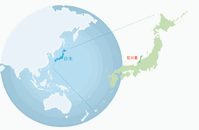 The prefectural capital Kanazawa was originally a castle town ruled during the Edo Period (1603-1868) by the Maeda clan, a feudal lord family second only in renown to the shogunal Tokugawa family itself, and it has cultivated a diverse and refined culture of handicrafts and performing arts that still flourishes to this day. The prefectural capital Kanazawa was originally a castle town ruled during the Edo Period (1603-1868) by the Maeda clan, a feudal lord family second only in renown to the shogunal Tokugawa family itself, and it has cultivated a diverse and refined culture of handicrafts and performing arts that still flourishes to this day.
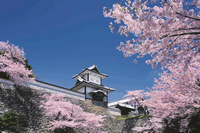
Kanazawa castle
Ishikawa Prefecture accounts for a mere 1% of Japan's population and land area, but it has leveraged these geographical and historical features to become one of the most active regional governments in soliciting visitors from abroad.
Here I would like to discuss three aspects of Ishikawa's strategies for attracting foreign visitors:- The environment in which we are seeking to attract foreign visitors to Ishikawa
- Current efforts and challenges in attracting visitors to Ishikawa
- Future strategies to attract visitors to Ishikawa
- The environment in which we are seeking to attract foreign visitors to Ishikawa
With the yen's recent downturn and the selection of Tokyo as the host of the 2020 Olympics/Paralympics drawing greater attention to Japan, the number of foreign travelers visiting the country has hit all-time highs for the past three consecutive years. This growth is expected to continue into the future, offering areas off the well-trodden tourist paths good opportunities to attract visitors.
The Hokuriku Shinkansen (bullet train) went into service in March of last year, substantially improving access to the region by shortening the travel time between Tokyo and Kanazawa from four hours to two.
- Current efforts and challenges in attracting visitors to Ishikawa
Ishikawa is making headway in its efforts to attract visitors from China, South Korea and Taiwan, who enjoy access to regularly scheduled flights to/from Komatsu Airport, and visitors from Hong Kong and other parts of Southeast Asia as well as Europe and the US. The number of foreign visitors staying in accommodation in the prefecture topped 363,000 last year, setting a new all-time high for the third year in a row.
-> (1) Taiwan: 109,000, (2) Europe: 57,000, (3) US:33,000, (4) China: 30,000,
(5) Hong Kong: 28,000 In revamping its tourism plan in March 2015, Ishikawa set a new target for 2025 of one million foreigners using accommodation in the prefecture, but an unexpectedly strong surge in domestic demand following the launch of the Hokuriku Shinkansen line has put a strain on the supply of accommodation in the prefecture, especially in Kanazawa. This has made it difficult to expand existing efforts to attract Asian and other visitors on group tours, giving the prefecture another challenge to address in achieving its target.
The principal aim in attracting foreign visitors is the revitalization of local economies through tourist spending, and determining the best means of generating economic gains through this approach requires further consideration.
- Future strategies to attract visitors to Ishikawa
(1) Boosting the number of foreign travelers throughout the year
The most popular route taken by foreign visitors to Japan ? often called the "Golden Route" ? is to travel from Tokyo to Kyoto and Osaka using the Tokaido Shinkansen but, with the Hokuriku Shinkansen now in service, a new route for travelers has been created, running from Tokyo to Kyoto and Osaka via Ishikawa Prefecture and the Hokuriku region.
This route could become especially popular among Westerners with a strong interest in Japanese culture, as it offers landscapes, seascapes and exposure to traditional lifestyles maintained in the countryside that give visitors greater insight into the depths of Japan.
Western visitors tend to make reservations early and travel individually, and the fact that they do not require a block of rooms makes it easier for lodgings to accommodate them. They also tend to stay multiple nights, so the economic benefits they generate make them an extremely promising market when looking to increase the number of visitors to Ishikawa.
To publicize this appealing route in Western markets and elsewhere, Ishikawa Prefecture will be collaborating with Japan Railways as well as towns and cities along its rail lines in joint PR efforts that may include invitations to local media and booths at travel exhibitions. We intend to undertake these efforts in a continuous fashion so as to boost visitor numbers throughout the year.
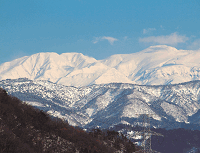 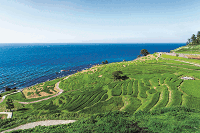 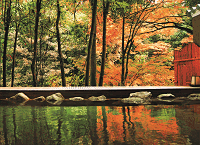
(2) Evening out seasonal fluctuations
The vast majority of tourists who visit Ishikawa Prefecture are domestic visitors from Tokyo, Osaka and other metropolitan areas, the peak seasons for these visitors being spring and autumn. In seeking to bring in more foreign visitors, it is important that we focus on the winter and summer seasons, which are more amenable to accommodating them.
Accordingly, we have been seeking to lure Australian visitors who come for the skiing in Nagano, one hour away from Kanazawa by the Hokuriku Shinkansen, to Ishikawa for some après-ski tourism as part of our efforts to attract visitors in winter, which also includes activities targeting visitors from Southeast Asia whose travel season peaks in December.
(3) Extending the areas visited by travelers
Kanazawa is the most popular spot in Ishikawa among foreigners, and accommodation facilities there operate at high occupancy rates throughout the year. To further increase the number of visitors, it is essential that we attract visitors to Noto and Kaga, which are better able to handle a greater influx of visitors.
We have thus decided to utilize various forms of media to explain the appeal of Noto and Kaga to visitors from Taiwan, Hong Kong and elsewhere, many of whom are repeat visitors to Japan interested in exploring all corners of the country.
(4) Attracting MICE participants and affluent travelers
Meetings, incentives, conferences and exhibitions (MICE) held overseas by foreign companies for their employees and business partners are characterized by the use of relatively high-priced accommodation and dining facilities and by substantial spending on souvenirs and other goods by participants.
Ishikawa Prefecture is home to a rich cultural heritage and traditional crafts of high quality, and attracting affluent visitors interested in genuine traditional culture should help boost sales of items produced in the prefecture such as the high-end "Wajima nuri" style of Japanese lacquerware.

Wajima nuri
Ishikawa has thus decided to collaborate with Tokyo, Kyoto and other major cities with strong brands to attract MICE participants and well-to-do travelers.
In appealing to overseas visitors even as domestic demand continues to rise, Ishikawa is striving to achieve a target of one million overseas visitors by stepping up its efforts to draw visitors throughout the year for a more even distribution both seasonally and geographically, and is working to revitalize local economies by initiating new initiatives to entice MICE participants and wealthy travelers.
Yoshikazu Kitaguchi is a Manager, International Tourism Department, Tourism Promotion Strategy Division, Ishikawa Prefectural Government.
The views expressed in this piece are the author's own and should not be attributed to The Association of Japanese Institutes of Strategic Studies. |
 |
|